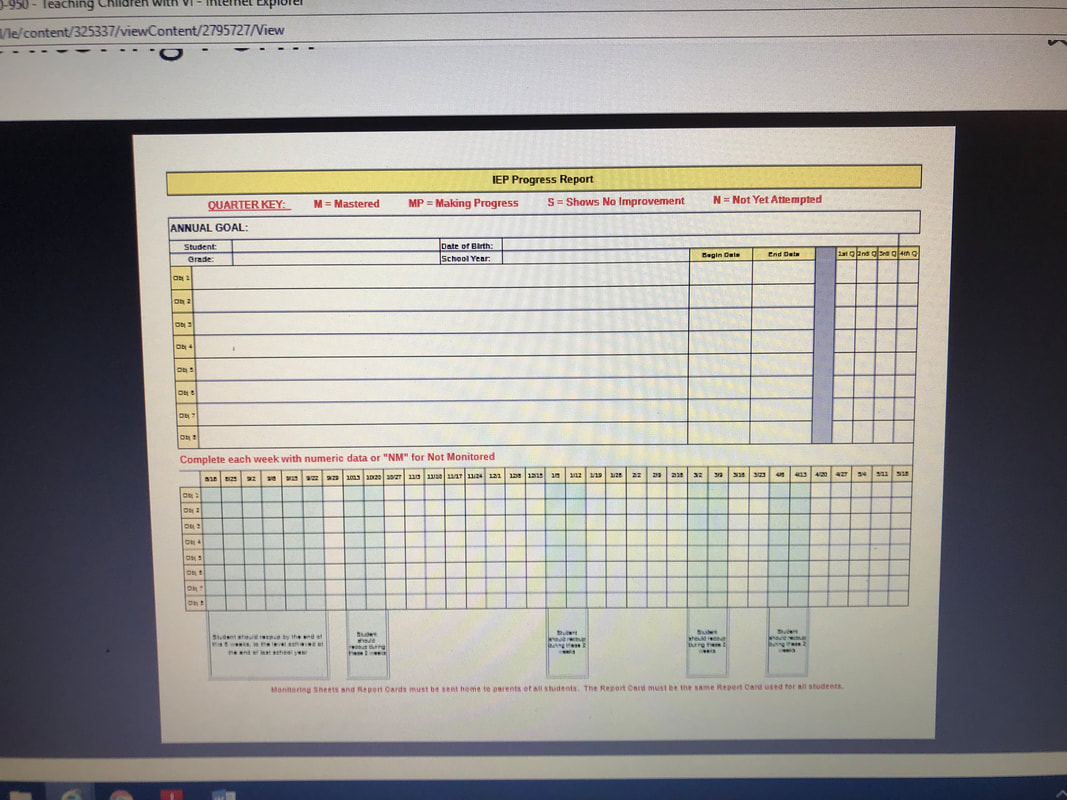|
Create a grid with letter in Braille and tally correct one
Student Name: Grade: School: School Year: Assessor: Skill: Identifies Braille Letter Dat e A E H K M R S W Z C D I J N P T V Y B F G L O Q U X Key: I – Letter Introduced / - Identified with Assistance X – Identified Independently The Oregon Project Skills Inventory
Name: Andrew School: Birth date: Date of Report: Evaluators: AAA, Teacher of the Visually Impaired BBB, Orientation & Mobility Specialist CCC, Special Education Teacher DDD, Occupational Therapist EEE, Physical Therapist FFF, Speech and Language Pathologist GGG, Mr. and Mrs. XXXX The Skills Inventory has three purposes: 1. assess the child’s developmental level in eight categories, 2. select appropriate teaching goals, and 3. record the child’s acquisition of new skills It is important to know that the Skills inventory is not used as a normative assessment instrument and that it does not determine a “precise” score. The skill inventory is used to determine the skills that student currently has. If the student consistently and correctly demonstrates a routine skill, then he is given credit for knowing that skills. If the skill is not consistent, he is not given credit for that skill. It should be known that the acquisition and consistency of skill acquisition is often slower in a child with low vision and or blindness, especially if there are any other additional handicapping conditions for that child. There are eight areas to this assessment. They include: cognitive, social, language, self-help, vision, fine motor, compensatory, and gross motor. The age of skill acquisition is broken into: birth to one, one to two, two to three, three to four, four to five, and five to six years. The following data sheets and graphs have charted Andrew’s acquired and unmet skills to date. It should be noted that all member of Andrew’s team went over each skill set category as a team to check for any discrepancies. The following table summarizes data obtained from the Oregon Project in November 2012 and February 2015. The variance column demonstrates a comparison of skills between the two evaluation periods. He gained skills in _ 23 age related subsections and maintained/regressed in _ 25 _ age related subsections |

 RSS Feed
RSS Feed
